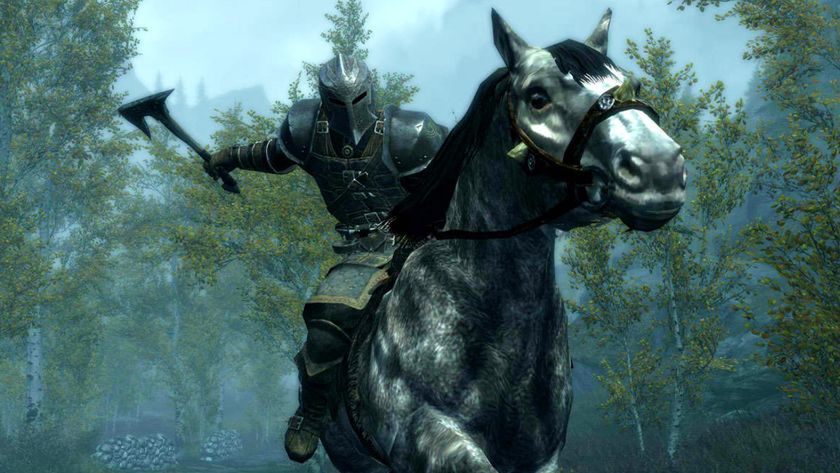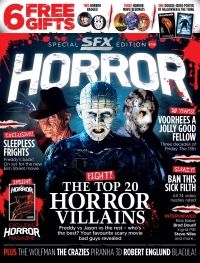
SFX’s latest one-off special issue is SFX COLLECTION: HORROR . In the shops now, it’s a celebration of all things that go bump in the night, guaranteed to delight all horror fans. You can find full details of all the contents here .
Amongst the many features is Horror’s Hidden Treasures, in which various horror luminaries – directors, screenwriters, novelists, comics scribes... – recommend their favourite little-known or under-appreciated horror films, books and comics. Horror novelist David Moody is one of the contributors, and was so inspired that he wrote much more about his favourites than we could fit onto the printed page, requiring some cruel pruning. So here – with thanks again to David – we present the full, unedited version. Take it away David....
THE ASPHYX
Suspend your disbelief and look past the over-the-top performances and sub-Hammer production values which hamper The Asphyx (1973) and you’ll find that most rare and precious of things: a unique concept. More than that, you’ll find a unique concept that’s pretty well executed. Sure, mankind’s quest for immortality has been considered and discussed ad infinitum in book and film, but never quite like this, before or since.
British theatre legend Robert Stephens plays Sir Hugo Cunningham, a Victorian English scientist and photographic pioneer. By using a specific combination of chemicals to create the bright light with which he illuminates the subjects he photographs, he discovers that he is able to capture and lock away an individual’s “spirit of death” (aka their Asphyx) at the very moment they’re about to die, thereby conferring them with immortality. All goes well until, predictably, Sir Hugo develops a taste for power and immortalises himself. As is so often the way in these things, even that’s not enough and he forcibly extends the experiment to his daughter and future son-in-law (a very young Robert Powell) with predictably tragic consequences.
The Asphyx hasn’t aged well, but it’s still a lot of fun. There are some ludicrous scenes (if you wanted to almost kill your daughter, would you really want to risk almost chopping her head off with a guillotine?!) and the special effects are neither special nor effective (particularly the florescent, glove-puppet Asphyx itself), but the film never outstays its welcome. The story rattles along at a decent pace, and takes several clever and unexpected turns during its final act. The twist in the tale – reminiscent of vintage Twilight Zone – is satisfying, and ensures the movie lingers long in the memory. Presumably that’s why it’s one of the next films being lined-up for an unnecessary and inevitably disappointing remake...
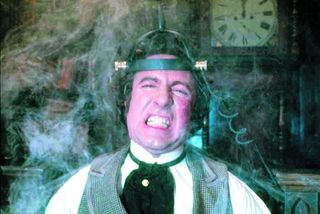
THE MUTATIONS
Sign up to the SFX Newsletter
Get sneak previews, exclusive competitions and details of special events each month!
Tom Baker and Donald Pleasence share top billing in this bizarre, long forgotten curio from 1974. The last film directed by legendary cinematographer Jack Cardiff (he continued to work for another 30 years, but the directing gigs dried up after this one), it’s a clunky, often unintentionally hilarious and yet unexpectedly affecting movie. Pleasence (with an accent which seems to vary in origin from scene to scene) plays Professor Nolter, a strictly by-the-numbers evil genius who plans to advance mankind’s evolution by using a “Cyclotron” ray to combine humans with plants and create the titular mutations. Quite how he expects this to advance anything is never fully explained. “Imagine a plant that can move and think,” he dramatically announces, before adding (somewhat less convincingly), “A man who can set down roots...”
Baker, buried under surprisingly effective make-up, plays Lynch, the disfigured co-owner of a travelling fairground freak show. He provides Nolter with a supply of bodies (usually attractive and female – Julie Ege is his final victim) upon which he carries out his foul experiments. Unfortunately, despite having the whole of London to choose from, Lynch seems to always manage to pick students from the college class Nolter teaches (yes, he’s a part-time lecturer, part-time home-based psychopath and genetic engineer!). As payment for supplying these unwilling victims, Nolter promises to eventually “cure” Lynch of his disfigurement – a bizarre trade-off when the scientist’s stated intent is to create mutations!
The film is a surreal but largely standard mix of genre cliches: dwarves chasing beautiful women through clouds of horror movie fog, appalling dialogue (“How did she die?” asks one character, only to be told, “She just died...”) and a soundtrack that’s your worst jazz nightmare. There are also some jaw-dropping (for all the wrong reasons) rubber-suited monster moments. Watch in horror as Nolter feeds a live rabbit to the trunk of a human-tree hybrid with teeth! Gasp in amazement as he amputates a blood-spurting branch! Then shake your head in disbelief as he puts a sticking plaster over the open wound!
All these things alone would be enough to make The Mutations required viewing for fans of obscure exploitative horror movies. But there’s a whole other layer to this film which elevates it to a new level. In a pale imitation of Tod Browning’s 1932 movie Freaks, a subplot concerns the disfigured Lynch’s desire to be “normal” whilst spending his life surrounded by the cast of his travelling freak show. Whilst Browning’s classic movie strove to show the viewer that, appearances aside, we’re all the same underneath, in The Mutations these unfortunate people appear to provide nothing more than cheap shock value. Their very presence, however, gives the film an unquestionably uncomfortable edge. We’re forced to watch and squirm in our seats as, during a painfully long and drawn out scene, the “freaks” appear one by one to parade their indignities. It’s an experience not unlike watching today's “shock docs” (The Boy With A Tumour For A Face, Born With Two Heads, The Girl With Eight Limbs and so on). Portrayed by a curious mix of people with genuine abnormalities and actors in unconvincing make-up (cue the bearded lady and the monkey-faced girl), the fact that most of these people were clearly not actors and were probably plucked from actual sideshows to appear in the movie make their scenes even harder to watch. Their stumbling, stilted performances add to our unease as the elderly “Alligator Woman” strokes her thick, scaly skin and reveals her total lack of hair, “Frog Boy” walks across the stage on his hands, his boneless legs hanging useless around him, “Pretzel Boy” gleefully points out the wince-inducing curves of his misshapen limbs and “Popeye” literally pops his eyes out from their sockets...
The Mutations isn’t a great film by any stretch of the imagination, but Tom Baker’s performance, the occasionally decent (but always watchable) effects and the genuine spectacle of the “freak show” make it well worth hunting out.
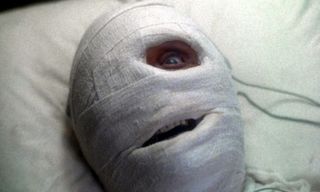
DEAD AND BURIED
A creepy and frequently forgotten gem from the early ‘80s, Dead And Buried boasts a surprising wealth of behind-the-scenes talent. With a screenplay by the late Dan O’Bannon and Ronald Shussett (fresh from their success with Alien – “the writers of Alien bring a new terror to Earth” proclaimed an early poster tagline) and directed by Gary Sherman (who’d previously made the equally effective and equally forgotten London Underground-based chiller Death Line), it’s an atmospheric thriller that, due to several large plot and logic holes, just misses the mark. But what it lacks in common sense, it more than makes up for with some outstanding gore effects, courtesy of an early credit for a certain Stan Winston.
A series of brutal and unprovoked murders rocks the small coastal town of Potters Bluff. The sheriff of the uncomfortably tight-knit community (played by TV movie staple James Farentino), struggles to piece together the clues and solve the crimes, steadily becoming aware that everyone else seems to know more about what’s happening than him. Other performances of note come from Melody Anderson (yes, that Melody Anderson – Dale Arden to 1980’s Flash Gordon) and a young Robert Englund in an underused supporting role, demonstrating flashes of the menace he’d later bring to Freddy Krueger. The show is comprehensively stolen, however, by US TV veteran Jack Albertson as Dobbs, the town mortician who (wouldn’t you know) harbours an unspeakably dark secret.
Sherman and his cast do a good job of conveying the mood and tone of the town and its inhabitants and it genuinely feels like somewhere you wouldn’t want to visit (and I should know – my in-laws live on the east coast and I’ve been to more than my fair share of “local shops for local people”). The film plays out like a curious hybrid of The Stepford Wives and Night Of The Living Dead, with the sparingly used gore effects being more than worth the price of admission alone (the time-lapse scene where Dodds lovingly strips then rebuilds a dead hitch-hiker’s crushed face being a particular highlight). Hunt out a copy and stick with Dead And Buried through to its wonderful denouement. It’s a well made and unfairly overlooked film.
Dog Blood, the sequel to David Moody’s horror novel Hater, is due for release in June. Visit www.djmoody.co.uk for more details.
A new two-disc edition of The Asphyx is due for release on 22 February, from Odeon Entertainment.
SFX Magazine is the world's number one sci-fi, fantasy, and horror magazine published by Future PLC. Established in 1995, SFX Magazine prides itself on writing for its fans, welcoming geeks, collectors, and aficionados into its readership for over 25 years. Covering films, TV shows, books, comics, games, merch, and more, SFX Magazine is published every month. If you love it, chances are we do too and you'll find it in SFX.

Buffy the Vampire Slayer reboot will reportedly have a main character who's "more Willow," with Sarah Michelle Gellar as a guest star
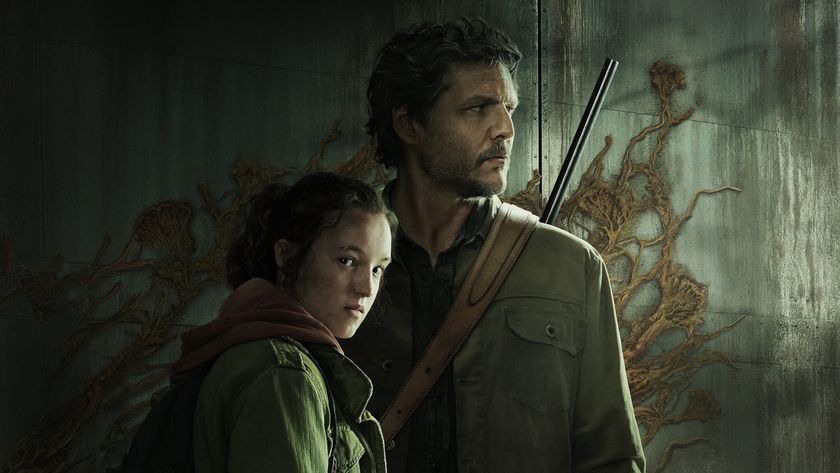
Neil Druckmann says he's letting HBO worry about "what to spoil or not" ahead of The Last of Us season 2 after Part 2's leaks: "[It] all blew up in my face"
